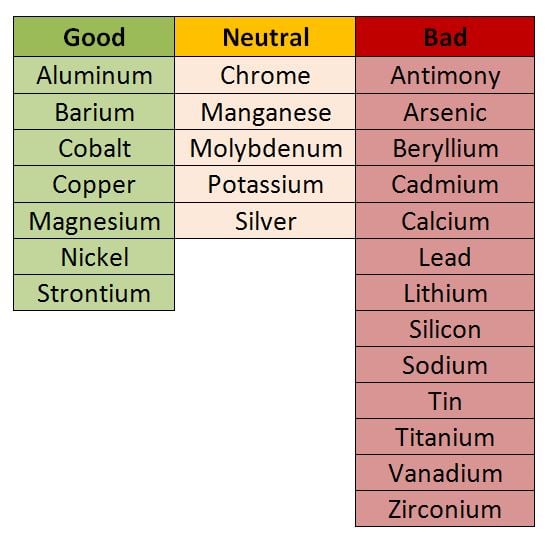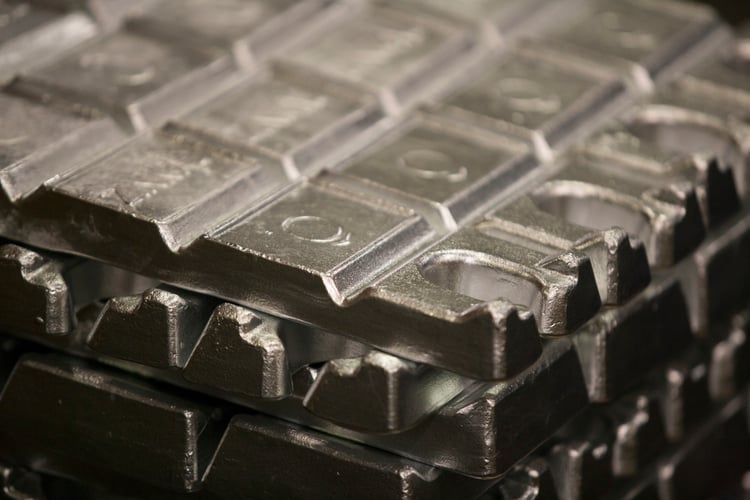As winner of numerous international awards, Bruschi Spa is known for its innovative approach in design and technology. We are glad to share our insights and experiences with the industry members.
ZAMAK molding in hot chamber die casting: chemical composition
ZAMAK molding is the creation of components using zinc alloys for die casting. In this post we are going to discuss how the choice of the alloy can affect the final result of hot chamber die casting.
What is ZAMAK
The acronym ZAMAK identifies a group of zinc alloys that were originally invented by New Jersey Zinc Co. and they are composed of four main metals: zinc, aluminum, magnesium and copper. This combination of elements proved so fit for foundry work that it soon became synonymous for “zinc alloy for die casting” worldwide.

The advantages brought on by this wide diffusion are remarkable: using a shared terminology to identify the same chemical composition prevents misunderstandings between designers and discrepancies in shared projects, while making it easier to acquire the right material.
Among the mechanical characteristics of this group of alloys, the most noteworthy are a rigidity 1,3 times higher than aluminum and a breaking load almost 2/3 times the one of steel, in addition to enduring a yield strength close to its maximum load. Moreover, it is important to remember some of its less-known physical characteristics:
- Electromagnetic shielding power
- High rate of vibration damping
- Non-sparking material
Some of these traits make it possible to create products with unexpected qualities, as in our project for a heatsink, in which we studied the equivalence in thermal conductivity between zinc alloys and aluminum alloys. Click here to read more
Why use an alloy instead of pure metal?
To answer this question it is necessary to analyze alloy’s physical, mechanical and microstructural qualities: the mix of different elements affects some key properties in metal shaping, such as corrosion resistance, electrical conductibility, tenacity and breaking point. In addition, the use of alloys lowers the melting point of metal, saving energy destined to furnace heating and reducing melting pot’s erosion.
Alloys give a chance to choose the chemical composition and the microstructure more suitable for solidification process and for operations following casting. The choice relies also on the type of component to produce, considering the importance of functional properties requested, such as:
- Pressure resistance;
- Corrosion resistance;
- Surface finishing;
- Dimensional accuracy;
- Wear resistance;
Just as important are the production requirements: when dealing with metals for hot chamber die casting it is necessary to keep in mind the following list of factors.
- Fluidity
Fluidity is a technological property of alloys that measures their ability to flow into the mold cavity filling even thin depths. It is defined as a technological property because it is determined not only by the material, but also by the process characteristics, in particular by the solidification process and by the thermal exchange with the mold.
- Hot cracking resistance
This value indicates the alloy’s ability to endure stresses caused by contractions during cooling and solidification.
- Solidification Shrinkage
This property affects the chances of shrinkage porosities and cracking of the die casted component.
For quick processes like hot chamber die casting, it is better to use alloys with high hot cracking resistance, whereas there aren’t particular requirements regarding fluidity, so that even alloys with low fluidity can be used.
ZAMAK for die casting
There are 3 main types of zinc alloys for die casting:
- Alloys with ~4% aluminum;
- Alloys with 8-27% aluminum;
- Patent alloys;
For each of these groups there are products with different percentages of secondary metals. The alloys most fitted for hot chamber die casting are ZAMAK 2,3,5 and 8: these alloys have an aluminum percentage ranging from 2,5% up to 8,8%.
Aluminum is used in zinc alloys for 3 main reasons: first of all, it reduces the melting point of the alloy, therefore lowering the thermal energy required by machines and granting energy saving. It also reduces alloy’s corrosion level towards steel: since both melting pot and die are made of steel, less corrosion means a longer tool life. Last of all, it improves the fluidity of the alloy, making it possible to obtain thinner depths and to ease molding. If an alloy loses aluminum, its fluidity lowers as well, and the risk of hot cracking and sticking increases.
Copper is the third component in order of quantity in ZAMAK, and it can vary from 0% to 3,5%. Unlike aluminum, which is always contained in the alloy, copper is optional: this happens because, even if the presence of copper can improve mechanical qualities, hardness and wear resistance, at the same time it can reduce elongation percentage at breaking point and alloy’s tenacity. In addition, it can also cause dimensional instability: dimensions of the cast will increase with the passing of time.
Magnesium behaves similarly to copper: it can become an advantage or a disadvantage. Depending on the amount it can be considered either as part of the alloy or as a contaminant: for example, it can be added to an alloy to contrast the effects of intergranular corrosion, but it can negatively affect fluidity in doses larger than 0,05%. Other effects linked to magnesium presence are: increased alloy hardness, higher risk of hot cracking and other problems related to surface finishing.
It should now be clear that even small percentages of foreign elements can have a huge impact on die casting, and not always positive ones. Therefore, it is fundamental to check and test raw material, to avoid to find out in the middle of the production that the formation of defects in die casting was caused by a small percentage of contaminants in the alloy.
In the following table are listed some materials, sorted by their influence in die casting:

How to choose the right kind of ZAMAK
The most used type of ZAMAK in die casting are ZP5 and ZP3. They are cheaper than ZP8, which is used only for those projects that require higher hardness or dimensional balance. ZP2 offers similar results in term of wear resistance and mechanical qualities, but it is more affected by dimensional expansion and shrinkage caused by aging.
We can summarize main traits of the most common alloys as shown in the table below:

To conclude, the choice of the alloy depends on the projects requirements. Since even the smallest variation in the amount of a certain component has a great impact on the final result, it is important to choose carefully and rely on trusted suppliers.
To learn more about zinc die casting and be up-to-date with industry’s news, subscribe to our blog.


